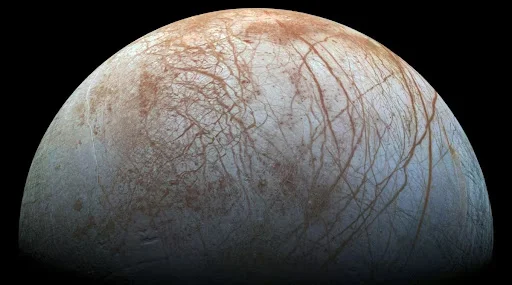NASA's Webb Space Telescope Discovers Carbon Source on Jupiter Moon Europa
Astronomers using NASA's James Webb Space Telescope have identified carbon dioxide in a specific region on the icy surface of Jupiter's moon Europa. This discovery has important implications for the potential habitability of Europa's ocean, which is believed to be one of the most promising places in our solar system to find life beyond Earth.
Carbon is an essential element for life as we know it. It is used to build organic molecules, the building blocks of proteins, carbohydrates, and other biological materials. The discovery of carbon dioxide on Europa suggests that the moon's ocean may contain the necessary ingredients for life.
The astronomers used Webb's infrared instruments to detect the carbon dioxide in a region called Tara Regio. This region is characterized by a chaotic landscape of ridges, valleys, and cracks. It is thought to be a geologically active area where the icy surface has been disrupted and material from the subsurface ocean has been brought to the surface.
The astronomers believe that the carbon dioxide on Europa's surface is likely coming from the subsurface ocean. This is because the carbon dioxide is concentrated in regions where there is evidence of recent geological activity. Additionally, the astronomers found that the carbon dioxide is not evenly distributed across the surface, but rather is concentrated in certain regions. This suggests that the carbon dioxide is being released from specific vents or fractures in the ice.
The discovery of carbon dioxide on Europa is a significant step forward in our understanding of the moon's potential for habitability. It is also a reminder of the power of the James Webb Space Telescope, which is already making groundbreaking discoveries about our solar system and beyond.
Implications for the Search for Life
The discovery of carbon dioxide on Europa is exciting because it suggests that the moon's ocean may contain the necessary ingredients for life. However, it is important to note that carbon dioxide alone is not enough to support life. Other essential elements, such as nitrogen and phosphorus, are also needed.
Scientists are still trying to learn more about the composition of Europa's ocean. Future missions, such as NASA's Europa Clipper, will be able to study the ocean directly and search for other biosignatures, such as organic molecules and methane.

